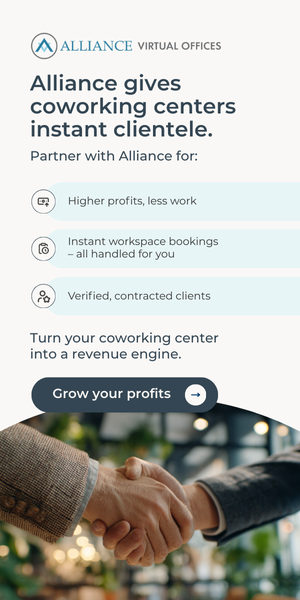- Constant task-switching may feel efficient, but it actually increases errors, wastes time, and raises stress levels.
- This decreases performance across the board, especially in workplace settings where focus is crucial.
- Integrating regular breaks, such as 20-minute “quiet time” or walking outside, helps workers recharge. These breaks reduce cognitive fatigue, lower stress, and improve focus, ultimately increasing work output and well-being.
Attention spans are shrinking — and not just in a vague sense, but in measurable, startling ways.
Dr. Gloria Mark, and a leading researcher on attention spans and digital behavior, recently joined the Allwork.Space Future of Work Podcast to explain how impactful this change has been.
Dr. Mark, who is Chancellor’s Professor Emerita at the University of California, has spent over two decades studying how technology affects our focus. Her findings are eye-opening, revealing just how quickly our ability to concentrate has deteriorated in the digital age.
Dr. Mark’s work, which spans years of monitoring real-world data in workplaces, universities, and through sensors tracking computer activity, found that our attention spans on screens have dramatically decreased.
Twenty years ago, people could focus on a task for around two and a half minutes before switching to something else. Now, that number averages just 47 seconds. Yes, you read that correctly — 47 seconds.
This rapid decline in focus is not just a side effect of multitasking; it’s a fundamental change in how our brains process digital information.
The consequences of this quick switching between tasks are far-reaching, affecting not only our productivity but also our well-being.
The Hidden Cost of Multitasking
It’s tempting to believe that multitasking is a productivity booster. After all, who doesn’t feel accomplished when juggling multiple tasks at once?
But Dr. Mark’s research reveals that multitasking has the opposite effect: it reduces performance, increases errors, and wastes time.
“When you’re switching your attention so rapidly, which is called multitasking, it hurts performance. People feel that it’s a badge of honor that they can switch so fast and they feel they can accomplish more, they’re actually accomplishing less,” she said during the podcast episode.
Here’s why:
1.Errors Increase: Constantly switching between tasks doesn’t just slow us down — it leads to more mistakes. Dr. Mark’s studies have shown that in real-world work settings, people who switch their focus frequently make significantly more errors. This is true not only in controlled lab environments but also in day-to-day activities, with real people in real workplaces.
2.Time Wasted on Task Switching: When you jump from one task to another, you don’t just lose the time spent on the task itself. You lose additional time — known as the “switch cost.”
This is the cognitive effort required to reorient yourself to the new task. Instead of seamlessly picking up where you left off, you waste precious minutes trying to recall what you were doing, what information you were using, and what you need to do next.
Over the course of a day, this time adds up, leaving you with less work completed and more frustration.
3.Stress Levels Skyrocket: Perhaps the most concerning side effect of constant task switching is the impact it has on our stress levels.
When individuals increase their task-switching frequency, their stress levels rise in tandem.
Dr. Mark’s research, which included heart rate monitoring, found that when individuals increase their task-switching frequency, their stress levels rise in tandem.
The physiological markers — like higher blood pressure — reflect the mental toll of these rapid switches. Not only does stress hinder performance, but over time, chronic stress can take a significant toll on mental and physical health.
Managing Attention in a Distracted World
So, what can you do to improve your focus and combat the constant barrage of distractions? Dr. Mark suggests several strategies that are surprisingly simple but highly effective.
1. Practice Meta-Awareness
The first step is becoming aware of your habits. Many of us pick up our phones or check emails out of sheer habit — without even thinking about it.
Dr. Mark recommends practicing what she calls “meta-awareness,” or the ability to observe your own actions as they happen.
When you feel the urge to check your phone, ask yourself: Why do I need to switch tasks? Is it because you’re bored, procrastinating, or avoiding something difficult?
By raising these automatic behaviors to the level of conscious awareness, you can begin to break free from habitual distractions. Once you become more intentional in your actions, you can establish better plans for staying focused and resisting the impulse to switch tasks impulsively.
2. Know When You’re Mentally Fatigued
Just as your body gets tired after physical exertion, your brain also experiences fatigue after extended periods of focus.
When cognitive resources are drained, our ability to filter out distractions weakens, making us more susceptible to interruptions. Dr. Mark emphasizes the importance of recognizing when you’re mentally fatigued and taking breaks.
The best kind of break? Getting up, moving around, and — if possible — spending time outdoors. Studies show that even just 20 minutes of walking in nature can help reset your mind, improve creativity, and restore focus. So next time you’re feeling mentally drained, step outside for a breath of fresh air. Your brain will thank you.
“I really think that workplaces need to offer a quiet time for employees. At least 20 minutes would be ideal…what do you do in this 20 minute period of time? Well, you can go outside and walk in nature. You can contemplate, meditate, do creative writing. You use a different part of your brain than what you use when you’re on your screen, “ Dr. Mark suggests.
3. Visualize Your Future Self
When you’re tempted to check your phone or fall into a distraction loop, try visualizing yourself at the end of the day.
Picture yourself at a point when your work is done — sitting back, feeling accomplished and relaxed. Ask yourself: What do I want to be doing? How do I want to feel?
This simple mental exercise can help you stay on track by aligning your current actions with your long-term goals.
Dr. Mark finds that this technique not only helps curb distractions but also boosts motivation. It’s a way to connect your present actions to the outcome you want, keeping you focused and intentional throughout the day.
The Bottom Line: Focus is Precious
In our fast-paced, hyper-connected world, it’s easy to get caught in the whirlwind of constant notifications, messages, and tasks that demand your attention. But as Dr. Mark’s research shows, the real cost of this digital chaos is the erosion of our ability to focus and perform at our best.
By understanding the hidden costs of multitasking and adopting simple techniques like meta-awareness, taking breaks, and visualizing success, we can begin to reclaim our attention and productivity.
It’s not about eliminating distractions altogether (that’s nearly impossible), but rather about being more mindful and intentional in how we manage our time and mental resources.
We Can’t Just Blame Tech
It’s clear our attention spans are under constant siege. With the rise of digital technologies, we’re bombarded by a never-ending stream of notifications, updates, and content designed to capture our focus. But according to Dr. Mark, it’s not just tech companies that are to blame — we are complicit too.
Tech companies have become increasingly adept at grabbing our attention. Through sophisticated algorithms, they predict and design content that’s specifically tailored to pull us in and keep us hooked.
But, as Dr. Mark points out, we are not helpless victims in this digital ecosystem. While technology plays a significant role in shaping our attention, we also contribute to the cycle through our own habits and urges.
Dr. Mark believes that we do have agency, though, and that we can take steps to become more intentional about how we use our attention and interact with technology.
Understanding this dynamic, and recognizing how we’re influenced by the digital world around us, is the first step in regaining control.
Understanding Your Personal Attention Rhythm
Just as our bodies have natural circadian rhythms, our brains also follow a unique attentional rhythm.
Dr. Mark emphasizes that understanding when you’re most alert and focused during the day is crucial to managing your workload effectively. Whether you’re an early riser or a night owl, everyone has their own peak times when focus and creativity are at their best.
Research suggests that most people experience two attentional peaks during the day: one in the mid-morning and another in the mid-afternoon. During these times, our cognitive resources are at their fullest, and we can do our best work.
Recognizing this pattern can help you plan your day more effectively and ensure that you’re using your peak focus periods for tasks that require deep thinking or creativity.
Dr. Mark advises employees and organizations to move away from rigid, one-size-fits-all schedules. Instead, she advocates for more flexibility in work design, and that people should be able to plan their days around when they’re most productive.
The Bottom Line: Do Less, Achieve More
It may sound counterintuitive, but one of the best ways to boost productivity is to allow yourself time to do less. In a world that constantly demands more, Dr. Mark believes that we need to rethink our approach to work.
By taking time to pause, reset, and reflect, we can come back to our tasks with renewed focus and creativity.
Rather than pushing through fatigue and stretching our cognitive resources too thin, embracing quiet time and respecting our personal attention rhythms can help us achieve more in less time. It’s not about working harder, but about working smarter—allowing ourselves the space to recharge, reflect, and tackle our tasks with renewed energy.
Ultimately, focus is a precious resource, and it’s up to us to protect it.


 Dr. Gleb Tsipursky – The Office Whisperer
Dr. Gleb Tsipursky – The Office Whisperer Nirit Cohen – WorkFutures
Nirit Cohen – WorkFutures Angela Howard – Culture Expert
Angela Howard – Culture Expert Drew Jones – Design & Innovation
Drew Jones – Design & Innovation Jonathan Price – CRE & Flex Expert
Jonathan Price – CRE & Flex Expert















